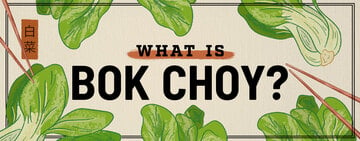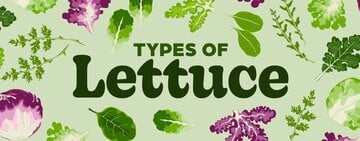What's the Difference Between Broccolini and Broccoli Rabe?
Last updated on Mar 24, 2025Michale LeRoyIf you've ever found yourself confused between broccolini and broccoli rabe, you're not alone. These two vegetables may look similar at first glance, but they're actually quite different. Broccolini has long, slender stems topped with small florets, and broccoli rabe is made up of leafy greens with an occasional floret. Both of these broccoli-like veggies have gained popularity in modern cuisine, appearing in a range of recipes from salads to stir-fries. This increased exposure has led to more people encountering these vegetables and trying to differentiate them. Keep reading to learn more about the characteristics and uses of broccolini and broccoli rabe.

Shown here: On the left, broccoli rabe has a thick stalk dominated by leafy greens with some small florets. On the right, broccolini has long, thin stems topped with delicate florets.
What Is Broccoli Rabe?

Broccoli rabe, also known as rapini, is a leafy green vegetable that's closely related to cabbage, Brussels sprouts, and kale. Despite its name, broccoli rabe is not actually a type of broccoli. The parts of broccoli rabe that are typically cooked are the leafy greens and any thin stalks that are present. Thicker, fibrous stems are usually discarded. You may see some small florets present within the leaves of broccoli rabe, but these florets are not as developed as the ones you see on a crown of broccoli or in a bunch of broccolini.
What Does Broccoli Rabe Taste Like?
Broccoli rabe has a distinctively pungent flavor profile. Its taste can be described as slightly nutty, with a peppery kick that sets it apart from other leafy greens. The bitterness of broccoli rabe is what gives it its unique taste, making it a favorite among those who enjoy bold and robust flavors in their dishes.
When cooked, broccoli rabe retains its strong undertones but also takes on a slightly sweet and earthy flavor. The bitterness mellows out, creating a more balanced taste that pairs well with other ingredients. Whether sauteed, steamed, or roasted, broccoli rabe adds a depth of flavor to dishes that can elevate the overall culinary experience.
How to Pronounce Broccoli Rabe?
The correct pronunciation for broccoli rabe is "brok-uh-lee rahb."
How to Use Broccoli Rabe
One of the simplest cooking methods to use for broccoli rabe is sauteing it with garlic and olive oil. This classic preparation enhances the vegetable's natural flavors and makes a great side dish or topping for pasta noodles. If you find yourself in the Philadelphia area, you will also see broccoli rabe used in sandwiches or hoagies. A popular variation of a traditional Philly cheesesteak is made with roast pork, broccoli rabe, and provolone cheese.
Where Does Broccoli Rabe Come From?
Originally hailing from the Mediterranean region, broccoli rabe has been a staple in Italian cuisine for centuries. It is believed to have originated in the southern part of Italy. The vegetable has since made its way to other parts of the world, including the United States and Mexico, where it is now grown in regions with similar growing conditions.
What Is Broccolini?

Broccolini, also known as baby broccoli, is a hybrid vegetable that is a cross between broccoli and Chinese kale, known as gai lan. It has long, thin stalks topped with small florets, resembling broccoli but with a more delicate appearance. One of the most interesting facts about broccolini is that it was born out of experimental vegetable breeding in the 1990s and was never expected to become as popular as it is today.
What Does Broccolini Taste Like?
What sets broccolini apart from regular broccoli is its milder taste and more delicate texture. While broccoli can sometimes have a slightly bitter or strong flavor, broccolini is sweeter and less pungent.
How to Pronounce Broccolini?
Broccolini is pronounced, "broh-koh-LEE-nee."
How to Use Broccolini
When it comes to cooking, broccolini is quick and easy to prepare. It can be steamed, roasted, sauteed, or grilled to bring out its natural sweetness and tender crunch. Whether you're adding it to stir-fries, pasta dishes, salads, or serving it as a simple side, broccolini is a delicious and nutritious addition to any meal.
Where Does Broccolini Come From?
The creation of broccolini involved cross-breeding broccoli with Chinese broccoli to produce a vegetable that retained the sweetness of broccoli while incorporating the peppery notes of Chinese broccoli. Broccolini is now grown in the United States, Australia, and Mexico. Its cultivation has expanded globally due to its increasing popularity and demand in commercial kitchens and households alike.
Broccolini vs Broccoli Rabe
Broccolini is a hybrid of broccoli that was bred to be long and slender with stems that are similar to asparagus in taste and texture. On the other hand, broccoli rabe is more closely related to cabbage or kale and features dark leafy greens that can be sauteed like turnip greens. If you're still having trouble telling these two vegetables apart, check out the differences below:
- Appearance: Broccolini has long stems topped with delicate florets, while broccolini has many leaves and sometimes a few tiny florets.
- Taste: Broccolini has a sweeter, milder taste than regular broccoli. Broccoli rabe is known for its bitter flavor.
- Uses: Broccolini can be used in place of broccoli in many recipes. Its delicate flavor makes it a very popular side dish. Broccoli rabe is usually sauteed and used in pasta dishes or sometimes sandwiches.
- Origins: While broccolini has its roots in modern agricultural innovation, broccoli rabe has a long history in Mediterranean cuisine, adding a distinct flavor profile to dishes.
Broccolini and Broccoli Rabe FAQ
We answer common questions about these two broccoli-like vegetables below:
What Are Some Other Names for Broccoli Rabe?
In Italy, broccoli rabe is commonly referred to as "rapini," which is derived from the Italian word "rapa" meaning turnip. This is because broccoli rabe has a pungent flavor similar to turnip greens. In some regions of the United States, you might hear it being called "rapini" as well, especially in Italian-American communities. Another name for broccoli rabe is "cime di rapa," which translates to "turnip tops" in Italian, emphasizing its leafy green nature.
How to Wash Broccoli Rabe?
After trimming away the thick stems, you can clean broccoli rabe the same way you would wash lettuce. Either cold run water over the leaves and small stems, or place the broccoli rabe in a water bath and agitate the leaves to dislodge any hidden dirt and debris.
What Is Tenderstem Broccoli?
Tenderstem broccoli is just another name for broccolini. It's also sometimes called baby broccoli or baby asparagus.
Can You Eat Broccolini Stems?
Yes, the stems of broccolini are edible. They are more tender and less fibrous than regular broccoli stems, which is one reason why broccolini has become so popular.
If you're looking for a broccoli alternative to add to your menu, broccolini is an excellent option that's similar in taste but more elegant in appearance. Despite its name, broccoli rabe may not be a suitable replacement for broccoli, but it's a flavorful cooking green that can be used to enhance your Italian dishes. When it comes to creating delicious menu options, knowing the difference between broccolini and broccoli rabe can make a significant impact on your culinary creations.








